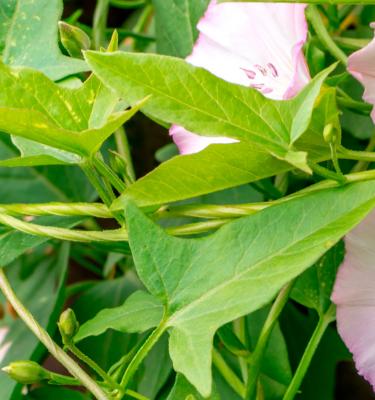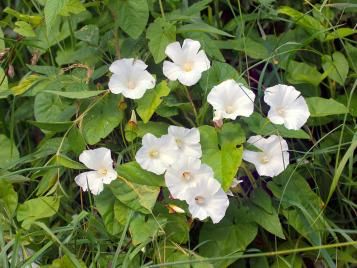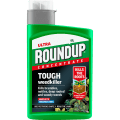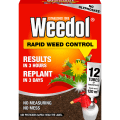

Bindweed
What is bindweed?
Bindweed is a perennial weed commonly found in the UK. There are two different types of bindweed, hedge bindweed (Calystegia sepium) and field bindweed (Convolvulus arvensis). Both are very similar in appearance and behaviour.
What does bindweed look like?
Bindweed can be easily identified by its twining stems and trumpet-shaped flowers. Bindweed leaves are also heart-shaped. As a climbing vine, the initial sign to look out for will be the thin thread-like vines – they will wrap tightly and bind around other plants (hence the name). These are then followed by heart-shaped leaves and the trumpet-shaped flowers.
The two different types of bindweed are slightly different in appearance.
- Hedge bindweed (Calystegia sepium) has large leaves and big white trumpet-shaped flowers in summer.
- Field bindweed (Convolvulus arvensis) is similar but smaller, with flowers that are either white or pink.
Bindweed should not be confused with the popular climbing plant Morning Glory (Ipomoea tricolor), which also has heart-shaped leaves and trumpet flowers. This plant belongs to the same family as bindweed but is not invasive. Morning Glory flowers are typically brightly coloured rather than white.

Why is bindweed bad?
Bindweed spreads quickly underground via a network of white roots and produces long trailing stems that twine around anything they touch, including plant stems. If not controlled, it can choke and smother other plants.
It is difficult to eradicate by hand, as bindweed roots break easily, and plants will re-grow from any segments of root left in the ground.
Field bindweed seeds can remain dormant in the soil for several years.
Bindweed removal
Weedkiller is the most effective way to get rid of bindweed, however non-chemical control can work if done consistently over several seasons.
How to get rid of bindweed
- To kill bindweed, dig up any seedlings as soon as they appear, removing as much of the root as possible. You will need to do this regularly for several seasons to eradicate the weed.
- If it is not possible to dig up the roots, for example in densely planted beds, cut the stems as close to ground level as possible, to weaken the plants.
- Never put bindweed roots on a home compost heap, as these are unlikely to get hot enough to kill the roots. Either burn the roots or send them to your local council’s green waste collection.
Weedkiller for bindweed
- The best weedkiller for bindweed is a systemic weedkiller containing glyphosate, like Roundup Ultra. This is applied to the leaves and absorbed into the plant, killing roots, stems and leaves. The most effective time to use weedkiller on bindweed is in summer when the plants start flowering.
- When spraying, take care to avoid the weedkiller drifting onto any other plants. Glyphosate is a non-selective weedkiller and will kill any plant it comes in contact with. Unwind bindweed stems from around other plants and spread them on bare ground before spraying them.
- Alternatively, use Roundup Gel to spot-treat individual weeds without affecting surrounding plants.
- Always follow the manufacturer’s instructions when applying weedkiller.
How to prevent bindweed
Apply a thick layer of organic mulch (e.g. compost) to beds to reduce the growth of weeds like bindweed by blocking light.
Mulching beds also improves the texture of the soil, making it lighter and more crumbly. As well as being good for soil health, this makes it easier to pull up deep-rooted plants like bindweed.













